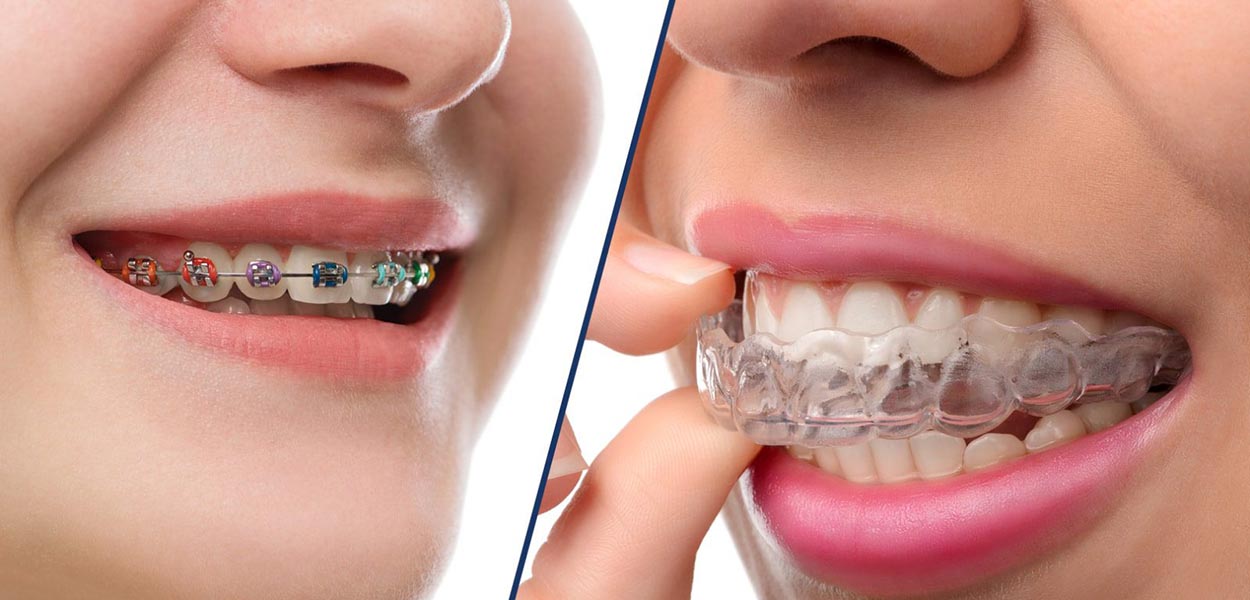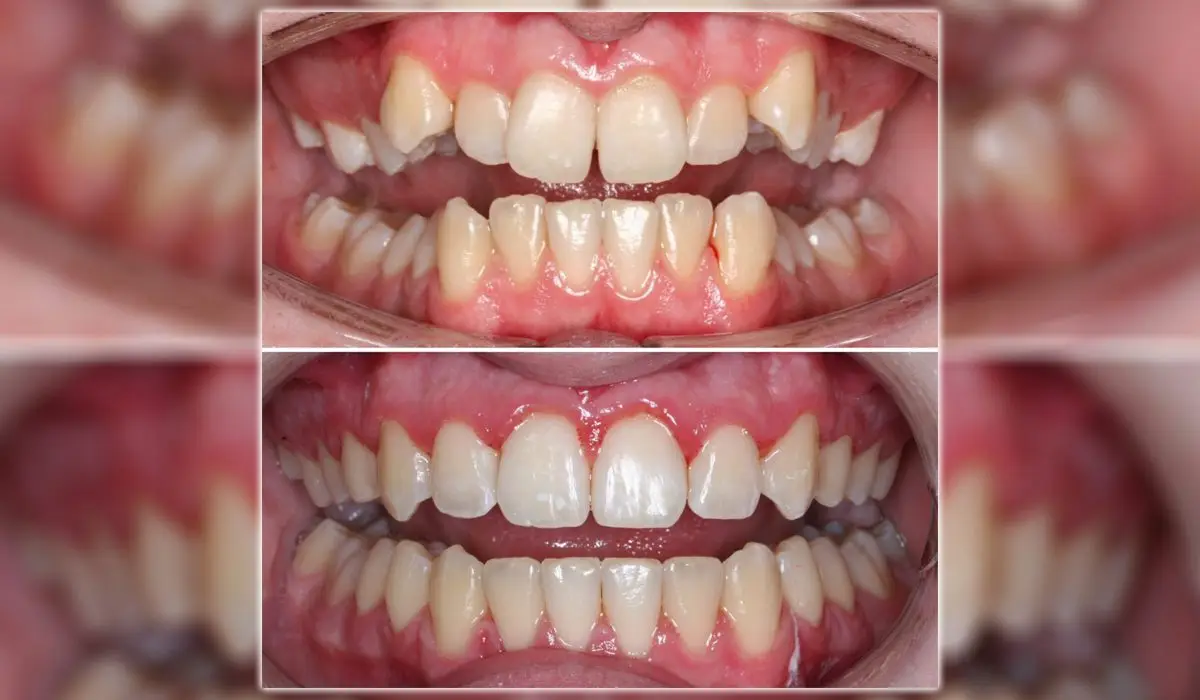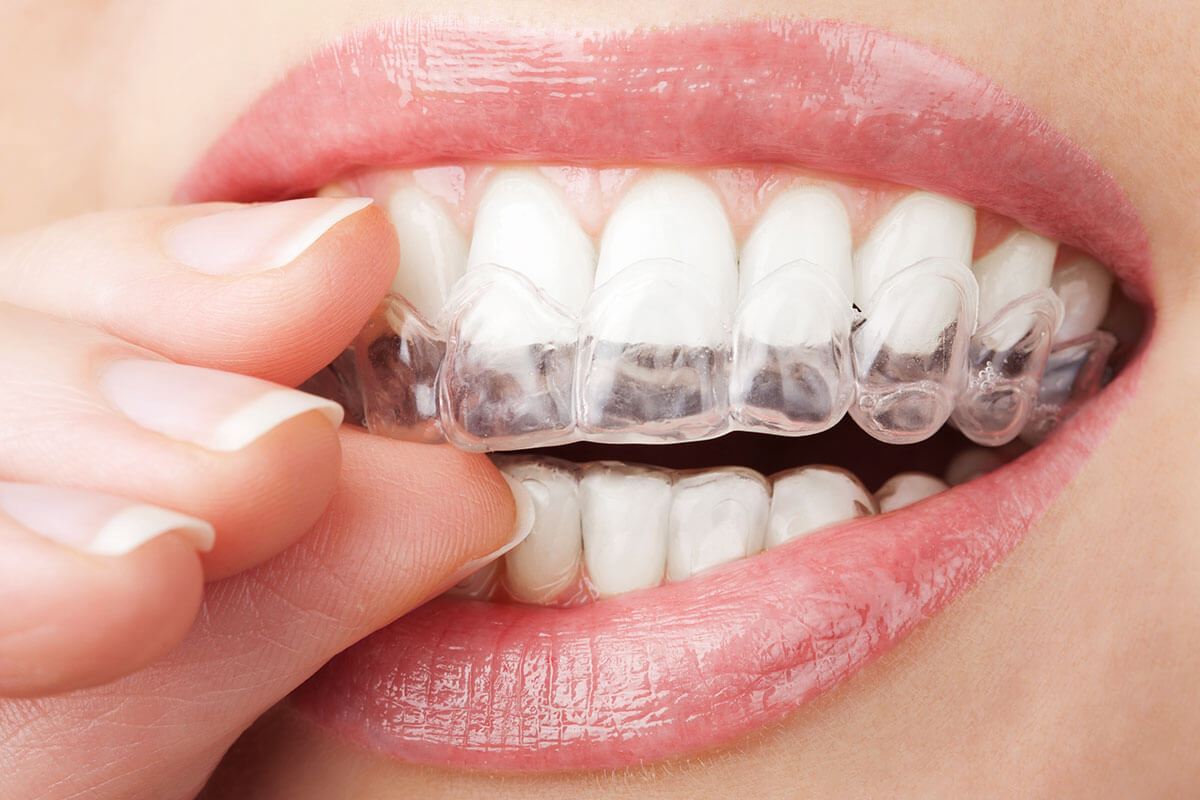Discover the Benefits of Invisalign for a Perfect Smile Makeover
Discover the Benefits of Invisalign for a Perfect Smile Makeover
Blog Article
Invisalign vs. Conventional Braces: Which Alternative Is Right for You?
When thinking about orthodontic treatment, the option between Invisalign and conventional dental braces provides a number of important elements that merit mindful examination. Invisalign uses a discreet choice with removable aligners, while conventional braces offer a much more visible yet reliable option for serious imbalance. Each choice encompasses distinctive benefits and downsides connected to looks, comfort, treatment period, and price. Understanding these subtleties is critical for making an educated decision that lines up with your individual choices and way of life. The concern continues to be: which choice will best meet your orthodontic requirements and assumptions?
Summary of Treatment Choices

On the other hand, typical dental braces contain metal braces and cords that are adhered to the teeth. This approach applies continuous stress over time to attain positioning. While effective for complex orthodontic problems, typical braces need regular brows through for modifications and can posture challenges in keeping dental hygiene because of the difficulty of cleaning around brackets and cords.
Both options have their advantages, and the selection typically depends upon specific dental conditions, way of living preferences, and patient conformity. Inevitably, seeking advice from an orthodontic specialist is crucial for establishing one of the most ideal treatment strategy tailored to individual requirements. Comprehending the nuances of each choice can dramatically affect the total success of orthodontic therapy.
Aesthetic Considerations
A substantial variable influencing the option between Invisalign and typical dental braces is the visual allure each therapy supplies. Invisalign aligners are crafted from clear plastic, making them virtually unnoticeable when put on. This discreet look is particularly attracting grownups and young adults who might really feel awkward about their orthodontic treatment. The capability to keep a natural smile throughout the alignment procedure can significantly improve the individual's confidence in social and specialist settings.
On the other hand, typical braces contain metal brackets and cords, which can be much more recognizable. While innovations in orthodontic technology have actually led to the advancement of smaller braces and tinted elastics, traditional dental braces still keep a more noticeable profile. For some individuals, the presence of braces might prevent them from seeking necessary therapy.
Inevitably, the option in between Invisalign and conventional dental braces might rest on individual preferences relating to appearances. Clients that focus on discretion commonly lean toward Invisalign, while those who are much less worried about exposure might choose standard braces. Understanding the aesthetic effects of each option is vital for making an informed decision that lines up with one's way of living and choices.
Comfort and Convenience

In regards to ease, Invisalign aligners are detachable, allowing clients to enjoy their favored foods without constraint and keep ideal oral health. Brushing and flossing are simplified, as the aligners can be gotten throughout these regimens, whereas conventional braces call for cautious maneuvering around brackets and cords.
Additionally, Invisalign's progressive system enables for less orthodontic brows through. Individuals typically obtain several sets of aligners at as soon as, which can improve the therapy process and reduce time invested in the orthodontist's chair. In contrast, standard braces demand regular changes, making Check This Out them less hassle-free for those with busy routines. Invisalign. Overall, the convenience and convenience of Invisalign make it an enticing choice for lots of people seeking orthodontic therapy.
Treatment Period and Performance
While both Invisalign and conventional dental braces are reliable in correcting dental imbalances, the period of therapy can vary substantially in between both choices. Commonly, Invisalign therapy can take anywhere from 12 to 18 months, depending on the complexity of the situation. The clear aligners function by progressively shifting teeth into their desired settings, and routine follow-ups with an orthodontist aid make certain progress remains on the right track.
On the other hand, standard dental braces often require a longer commitment, usually ranging from 18 months to three years. This is due to their fixed nature and making use of cables and brackets, which can be much more efficient for serious misalignments and complex cases (Invisalign). The treatment performance of traditional dental braces is well-documented, as they permit for specific adjustments and greater control over tooth movement
Ultimately, the choice in between Invisalign and typical dental braces might pivot on both the expected treatment period and the details oral problems available. Consulting with an orthodontist is important, as they can supply tailored recommendations based on specific demands, ensuring the picked technique lines up with desired durations and end results.
Expense Comparison and Insurance Coverage Options
Price plays a considerable role in the decision-making procedure for individuals considering orthodontic therapy, whether selecting Invisalign or traditional dental braces. Usually, the cost of Invisalign arrays from $3,000 to $8,000, while conventional dental braces normally cost in between $2,000 and $6,000. Elements affecting these expenses include the intricacy of the case, the period of treatment, and geographical place.
Insurance insurance coverage can considerably influence out-of-pocket costs. Several dental insurance policy plans give partial protection for orthodontic therapies, however the specifics can differ widely. It is crucial for people to examine their insurance coverage to identify the level of insurance coverage for either official site alternative. Typically, standard braces may be more often covered by insurance plans contrasted to Invisalign, which some insurance providers classify as an aesthetic procedure.
In addition, numerous orthodontic practices offer flexible repayment strategies, making both therapy choices extra accessible. Clients ought to ask about prospective financing choices and discount rates for in advance repayments. Examining the complete price, consisting of insurance coverage advantages and repayment plans, is necessary for making an educated choice read this post here that lines up with both aesthetic preferences and budget considerations.

Final Thought
In summary, the choice between Invisalign and traditional braces pivots on numerous aspects, consisting of aesthetic preferences, convenience, therapy period, and expense. Invisalign provides a discreet, removable alternative that promotes oral health and nutritional adaptability, while traditional dental braces might be preferable for complex oral problems and typically come at a reduced rate point. Ultimately, appointment with an orthodontist is necessary to examine private circumstances and establish one of the most suitable therapy choice for achieving optimum dental alignment.
When taking into consideration orthodontic treatment, the selection in between Invisalign and traditional dental braces presents numerous crucial factors that warrant careful analysis.Comparing Invisalign and traditional dental braces reveals unique treatment choices for orthodontic correction.While both Invisalign and standard braces are efficient in correcting dental imbalances, the period of therapy can vary significantly in between the 2 options.Price plays a substantial role in the decision-making procedure for individuals thinking about orthodontic treatment, whether deciding for Invisalign or conventional dental braces.In recap, the option in between Invisalign and traditional braces pivots on numerous elements, consisting of visual preferences, comfort, therapy period, and cost.
Report this page